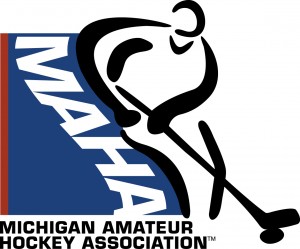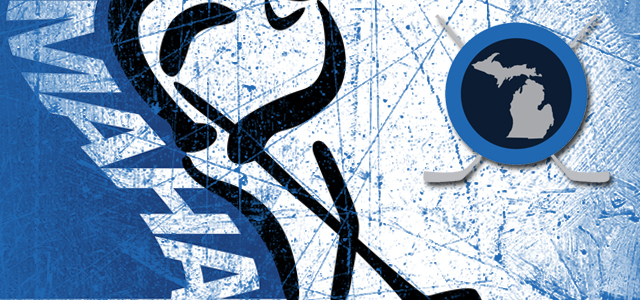New ADM-inspired format coming for Mite hockey leagues this fall
 This fall, the top youth hockey leagues in the state will be embracing a bit of change.
This fall, the top youth hockey leagues in the state will be embracing a bit of change.
Leagues such as Little Caesars, Adray and more will be making changes to their Mite hockey programs to better benefit the players at that age level.
It’s all part of introducing a new curriculum called ‘Red, White & Blue Hockey’ as part of USA Hockey’s American Development Model (ADM). The ADM is designed to be a long-term athlete development program for all players aged 4-20.
This fall, the top Mite hockey leagues in the state will provide both competitive half-ice and full-ice games for all levels – B, A and AA hockey. These games will all be part of the same league season, with half-ice games beginning in the fall, and full ice games beginning after Jan. 1, 2014.
Once the full-ice season begins after the first of the year, teams can play up to 15 full-ice games, and they can continue playing half-ice games, as well.
“We recognize there are still some that fear not playing full-ice at 8U hockey is hindering their child’s development,” said the Michigan Amateur Hockey Association in a statement. “That fact is, that is the furthest thing from the truth. Research has shown that that half-ice games more than double the amount of time players have the opportunity to test their skills under game conditions. Not only does this and other research support cross or half-ice play for kids at this age level, but so does the NHL, the top hockey league in the world. About 35% of the associations in Michigan have been fully using the new ADM model for two years already and are seeing great results. Parents and coaches in these associations now recognize the advantages and would no longer accept anything less. They understand that hockey is a marathon not a sprint, and it is important that young players develop a love of the game while developing their skills
“We are proud to be able to offer our young players these world-class programs that will make them better athletes and hockey players, all while allowing them to have more fun in the process.”

